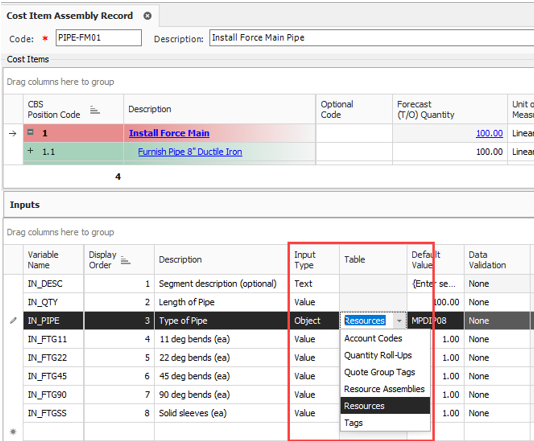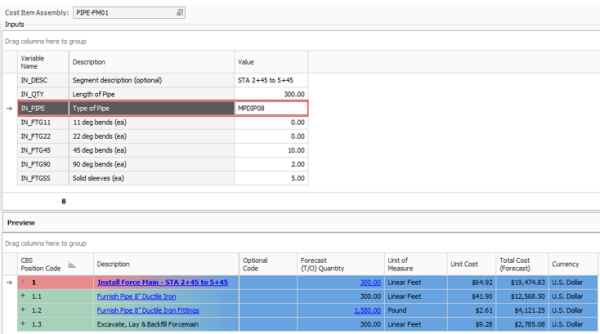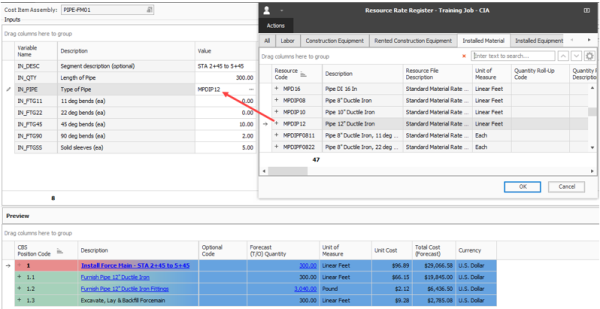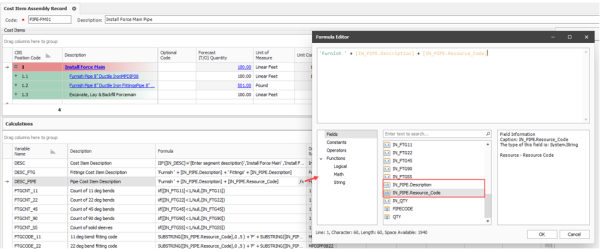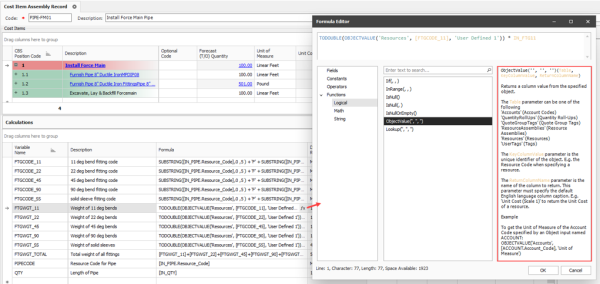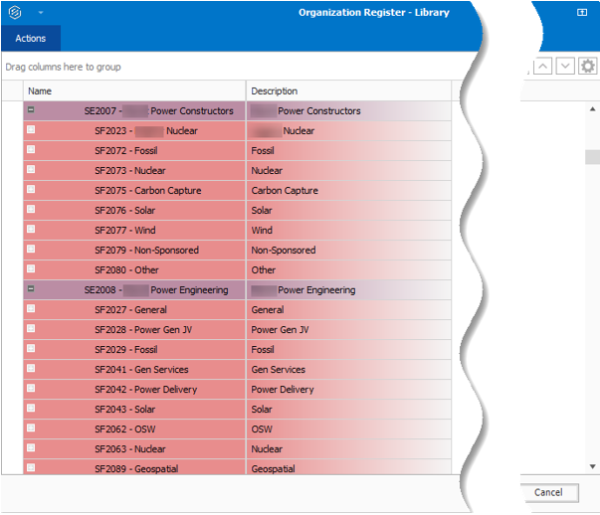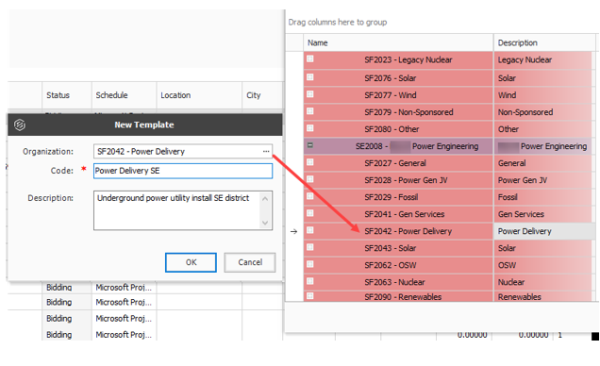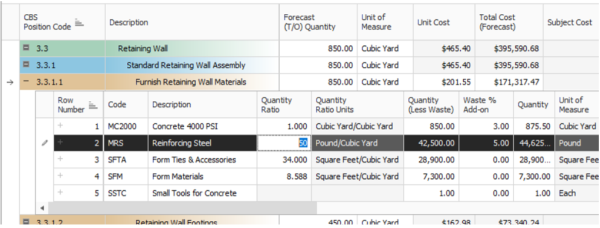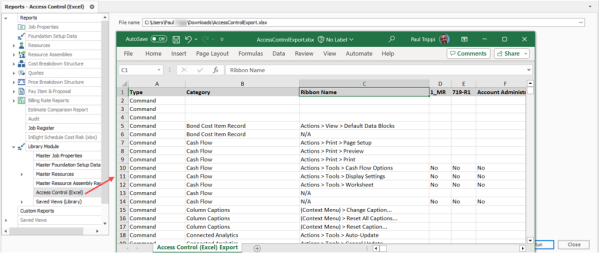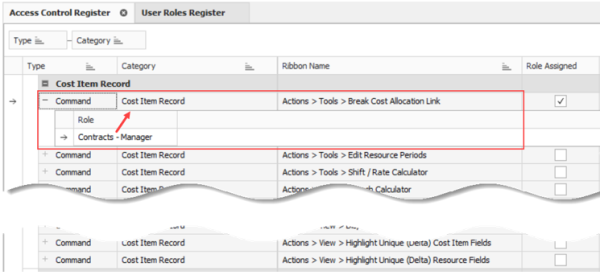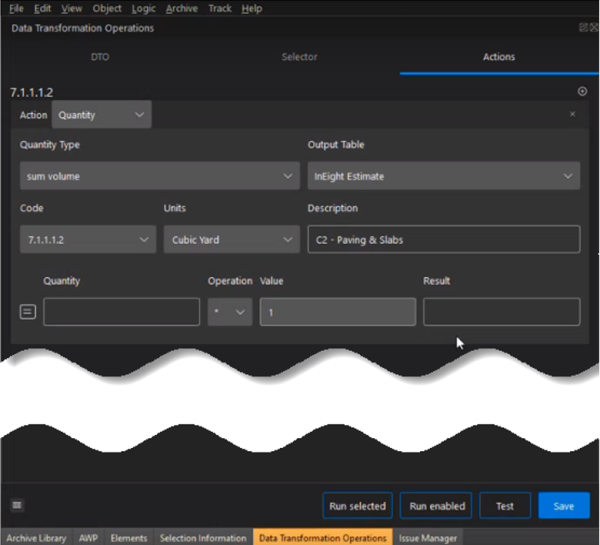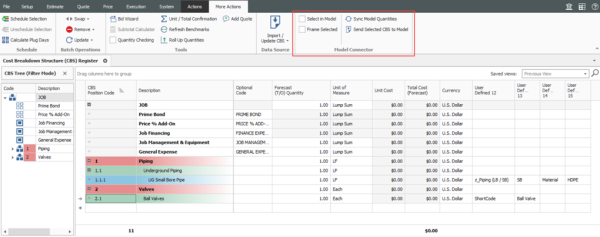Estimate in the cloud refers to InEight's hosted estimating solution on the InEight Cloud Platform.
Estimate on-premise refers to InEight's estimating solution deployed in a customer's local environment.
Estimate IN THE CLOUD 23.10 Release Notes
Cost Item Assemblies
-
Cost Item Assembly Object Input Values – The object input type has been added to the Inputs section of the Cost Item Assembly (CIA) record Inputs form. This saves you the time of updating and maintaining lists of resources from job to job.
 Read more
Read more
-
Using Object Type Inputs – In the CIA record Calculations form, Object Type inputs can be used in formulas by directly referencing either the Code or the Description as attributes of the input variable. These two new fields can be easily referenced and selected using the Formula Editor.
 Read more
Read more
-
ObjectValue function –The ObjectValue function can now be selected in the Formula Editor, which lets you utilize additional object meta data for use in your calculations.
 Read more
Read more
Organizational Breakdown Structure
-
Assign Templates – You can now assign templates to specific organizational nodes in the OBS.
 Read more
Read more
Resource Employments
-
Editable Quantity Ratio Field - The Quantity Ratio column in the Resource Employment register, which indicates the proportion between the quantity of a cost item and the quantity of the resource employment, is now an editable field.
 Read more
Read more  Watch video
Watch video
-
Quantity Ratio Units – The new Quantity Ratio Units field shows you how the Quantity Ratio is calculated.
 Read more
Read more
Reports
-
Access Control Report - You can now export the Access Control register as a report, so you can easily audit multiple assignments and determine the level of access that users and roles have.
 Read more
Read more
Model Integration with Estimate
-
Model integration - The current Model to Estimate on-premise integration now works with Estimate in the cloud.
 Read more
Read more
